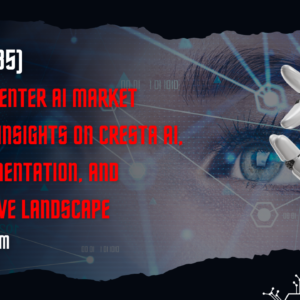1. Executive Summary
-
- Overview of AI’s role in financial markets
- Introduction to AI model hallucinations: Definition and causes
- The growing risks of relying on AI in high-stakes financial decisions
2. Understanding AI Hallucinations
-
- What is an AI model hallucination?
- Common causes of hallucinations in large language models (LLMs) and machine learning algorithms
- Examples of AI hallucinations in real-world applications
3. The Financial Market Landscape: AI’s Growing Role
-
- How AI models are used in financial markets: Trading, risk assessment, fraud detection, and more
- AI-driven decision-making in investment strategies, hedge funds, and high-frequency trading
- The benefits and challenges of AI adoption in finance
4. Case Studies: AI Hallucinations Impacting Financial Markets
-
- High-profile instances where AI models went wrong in financial contexts
- Consequences of AI-driven errors: From market manipulation to erroneous trades
- Quantifying financial losses linked to AI hallucinations
5. Quantifying the Risk: How AI Hallucinations Can Distort Financial Markets
-
- The mechanics of AI-induced errors in financial trading algorithms
- How AI model hallucinations can lead to incorrect stock valuations, pricing models, and market predictions
- The compounding effects of hallucinations in large-scale financial ecosystems
6. Types of Financial Risks Exacerbated by AI Hallucinations
-
- Market risk: How faulty AI models can influence market volatility and liquidity
- Credit risk: The dangers of relying on AI-driven credit scoring and risk assessment tools
- Operational risk: Internal disruptions caused by erroneous AI-driven decision-making
7. The Role of Data: How Incomplete or Biased Data Amplifies AI Hallucinations
-
- Understanding the relationship between poor data quality and AI hallucinations
- How biased or outdated financial data can lead to incorrect predictions
- Strategies to mitigate the risk of faulty data influencing AI models
8. Mitigating the Impact of AI Hallucinations in Financial Markets
-
- Key strategies for identifying and preventing AI hallucinations
- The importance of human oversight and hybrid AI-human decision-making systems
- Enhancing AI model transparency and interpretability to reduce risk
9. Regulatory Responses to AI in Financial Markets
-
- Current regulations governing AI use in financial markets
- The need for new regulatory frameworks to address AI model hallucinations
- Global perspectives on AI regulation: US, Europe, and Asia
10. Technology Innovations to Combat AI Hallucinations
-
- Advancements in AI model verification and validation
- AI auditing tools and risk management frameworks to monitor model performance
- Emerging trends in AI safety, including explainable AI (XAI) and adversarial testing
11. Future Outlook: Can AI Be Trusted in Financial Markets?
-
- Predictions for AI adoption in finance over the next decade
- The balance between innovation and risk in AI-driven financial models
- How AI models are evolving to better handle complex financial data
12. Investment Opportunities in AI Risk Mitigation
-
- Startups and companies focusing on AI safety and risk management
- The growing market for AI-driven risk assessment tools in finance
- How investors can position themselves to capitalize on AI risk mitigation technologies
13. Conclusion: Navigating the Risks and Rewards of AI in Financial Markets
-
- Summary of the risks posed by AI hallucinations in financial systems
- Strategic recommendations for financial institutions, regulators, and investors
- Final thoughts on the future of AI in finance and the path to minimizing risk







